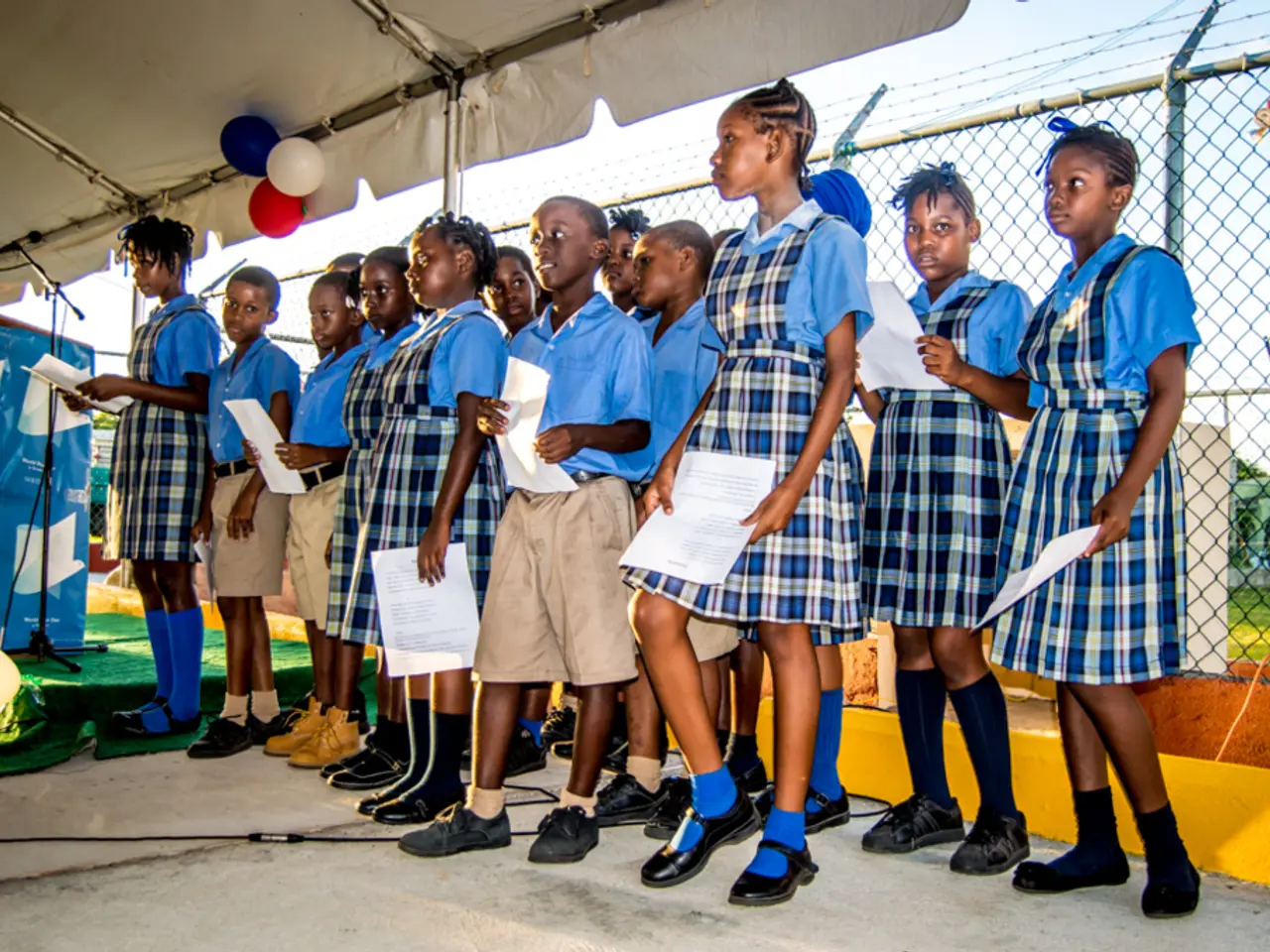In Afghanistan, adolescent females, deprived of academic instruction beyond the 6th grade, seek refuge in religious institutions.
In Afghanistan, the Taliban's ban on girls' secondary and higher education has profoundly restricted girls' access to formal education, affecting millions. Since 2021, the Taliban have prohibited girls from attending school beyond grade six and excluded women from universities. This ban has deprived approximately 2.2 million girls of their right to education as of 2025, with projections warning that if it continues through 2030, over 4 million girls will be denied education beyond primary school [1][2][4].
This educational ban has had severe repercussions beyond academics. UNICEF highlights catastrophic consequences, including a shortage of female doctors and midwives, resulting in increased maternal and infant mortality rates [1]. The restriction undermines not only individual futures but also the nation's health system, economy, and progress [2].
In response to the formal education ban, many girls and families have turned to madrassas (Islamic religious schools) as an alternative. Madrassas provide religious education focused primarily on the Quran, which some view as a foundational learning to prepare for other sciences and knowledge. A madrassa leader emphasized that learning the Quran is considered the base for other fields such as medicine or engineering within conservative Afghan society [2]. However, madrassas generally do not offer the comprehensive curriculum that formal secondary or higher educational institutions provide.
At least 1 million students have enrolled in madrassas over the past year alone, bringing the total to over 3 million, according to Deputy Minister of Education Karamatullah Akhundzada. One such student is Faiza, a 25-year-old student at the Tasnim Nasrat center in Kabul. Faiza studies Qur'anic sciences and believes it is her duty to know what is in the book that Allah has revealed to them [3]. The Tasnim Nasrat center, with approximately 400 students, has 90% female students, who study the Qur'an, Islamic jurisprudence, the sayings of the Prophet Muhammad, and Arabic [3].
However, for girls like Nahideh, a 13-year-old girl in Afghanistan, the Taliban's ban on girls' secondary and higher education has made her dream of becoming a doctor unattainable. Nahideh works after school collecting water to sell in a cemetery, but she dreams of a future where she can study medicine. In the meantime, she has to settle for the limited educational opportunities provided by madrassas [3].
Clandestine educational activities have also emerged. Some women have organized underground schools operating covertly, sometimes disguised as sewing classes, risking Taliban retaliation. These informal initiatives represent a form of resistance and a hope to maintain some educational opportunities despite official bans [3].
In summary, while religious schooling and secret home-based schools provide some educational alternatives, they cannot fully substitute for lost access to comprehensive secondary and higher education under the Taliban's policies. The situation remains dire for Afghan girls and women seeking education.
References: [1] UNICEF. (2022). Afghanistan: Girls' education under threat. Retrieved from https://www.unicef.org/afghanistan/63672_Girls_education_under_threat.html [2] BBC News. (2021). Afghan girls' schools shut down as Taliban impose ban. Retrieved from https://www.bbc.com/news/world-asia-58864219 [3] Al Jazeera. (2021). Afghanistan's underground schools for girls. Retrieved from https://www.aljazeera.com/features/2021/10/9/afghanistans-underground-schools-for-girls [4] Human Rights Watch. (2022). Afghanistan: Taliban's Ongoing Attacks on Girls' Education. Retrieved from https://www.hrw.org/news/2022/03/15/afghanistan-talibans-ongoing-attacks-girls-education
- The Taliban's ban on girls' education in Afghanistan has led to a significant increase in enrollment in madrassas, reaching over 3 million students.
- Recognizing the importance of religious education, a madrassa leader in Afghanistan highlighted that it serves as a foundation for other sciences, such as medicine or engineering.
- While madrassas offer some education, their curriculum does not compare to the comprehensive education provided by formal secondary or higher educational institutions.
- Many Afghan girls, like Nahideh, dream of careers in fields like medicine, but the Taliban's ban on girls' education has made these goals seem unattainable.
- In an effort to continue learning, women in Afghanistan have established underground schools, disguising them as sewing classes, to avoid Taliban retaliation.
- The lack of access to education in Afghanistan has wider implications, affecting not only the health and wellness of women but also the nation's economy, religion, personal growth, learning, and women's health.
- The United Nations Children's Fund (UNICEF) has warned of catastrophic consequences, particularly increased maternal and infant mortality rates, due to the shortage of female doctors and midwives resulting from the ban on girls' education.
- Girls' education, including secondary and higher education, is essential for the nation's progress, as it promotes economic growth, gender equality, and global competitiveness in areas like science, health, and sports.




